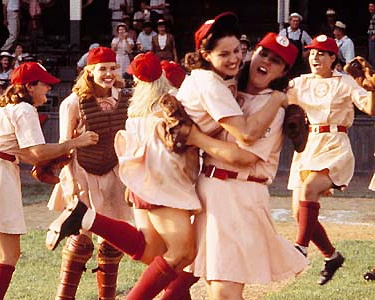In Which Mari and Mey Have Conflicted Feelings About “Transparent”
Being a trans woman is complicated. It can seem like every day you have to deal with things that are anything but black and white. There’s the media’s portrayal of trans people, terminology, the entire concept of “passing” — and that’s just scratching the surface. Luckily, you have Mari and Mey to talk out their conflicted feelings on these things. Today, we’re going to talk about our conflicted feelings regarding the upcoming Amazon Prime show Transparent, which focuses on a trans woman who comes out to her adult family and how her family deals with that and with life. (Previously, Autostraddle has written enthusiastically about the pilot.) We watched the preview and talked things out.
Mey: I guess the first thing we should probably talk about is Jeffrey Tambor, a presumably cis man, playing a trans woman. Obviously cis men playing trans women has been a huge topic of public conversation over the last year (and longer within trans circles) and so the decision to cast a cis person is a strange one.
Mari: Considering how difficult it is for trans performers to get work, it really bothers me that the central character of a series billed by so many as “groundbreaking” is being played a cis person. Especially seeing how much acclaim cis performers seem to get for playing trans characters. See Jared Leto in Dallas Buyer’s Club and Felicity Huffman in Transamerica.
Mey: Yeah, I totally agree. It’s a weird thing seeing people being called “brave” and “groundbreaking” and “amazing” for pretending to be trans on screen for a few months. And then they get paid and awarded for it, and that makes it even stranger. So that did really rub me the wrong way.
Mari: Oh, to add to that list… forgot about Jaye Davidson in The Crying Game. (And these are just people who were nominated for or won Academy Awards for playing trans characters.)
There are arguments to made, of course, about the need to have big names attached to a project for it to gain attention. But, considering they have Jill Soloway directing, that’s already one big name. And, to me, it seems like casting bigger names in the support characters (as the series seems to be designed as more of an ensemble cast), and casting a trans actress as the trans character would have been a much better way to go.

The main cast of Transparent via Hitflix
Mey: Exactly. With people like Jay Duplass and Gaby Hoffman, who are playing two of her kids, who are sort of hip, rising stars, and then people like Rob Huebel and Carrie Brownstein in supporting roles, it seems like they do have a strong supporting cast that has several recognizable names.
But I think that the other thing they were going for, was that they wanted someone who fit their idea of what a late-transitioning trans woman looked like. Like, I think that they wanted people to be able to recognize the character as “having been a man up until now,” you know? Which obviously, that is super messed up within itself and there are actual trans actresses who look all sorts of ways and are all sorts of ages. Or why couldn’t they take a trans actress and give her the “trans woman makeup” that they gave Felicity Huffman in Transamerica?
Mari: I was thinking about that, too. Since the character is supposed to be a relatively late-in-life transitioner, there may have been some concern about finding a trans actress willing to look they wanted the character to look. But, I’m really bothered by the idea that trans characters need to look a specific way to meet the cis public’s conception of what trans women look like.
I think that’s a pervasive problem with the way trans women are portrayed by the mainstream media. They’re all either like Rayon, or they’re someone stunningly gorgeous like Laverne Cox or Carmen Carrera. There’s never any middle ground of the average-to-pretty trans women who tend to make a large part of the trans population.
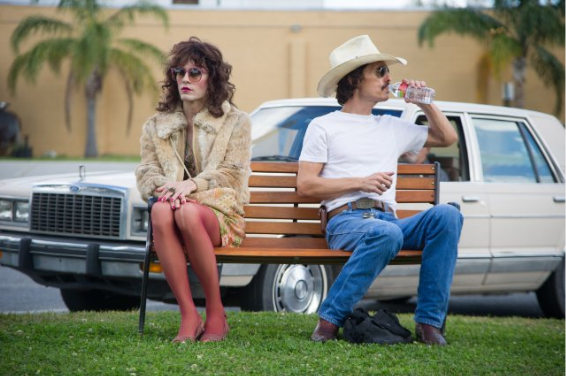
Jared Leto as Rayon, in Dallas Buyer’s Club
Mey: Yeah, and I feel like Hollywood needs to make all trans women characters have literal physical markers that their character is trans. They want us to be constantly aware that she’s a trans woman, not a “regular woman” like all the other characters (since there is only ever one trans woman). And they only know two ways to physically mark a character as trans, and those are to make them either seductive and beautiful trans women who look “too good to be true,” or women who are clearly supposed to fit into the “men in dresses” trope. And there are definitely plenty of trans women who fit into both those categories, and that’s cool, but like you said, there are plenty of us who are in between and we never seem to be portrayed at all.
Mari: Yes! Absolutely spot on! Like you pulled the thoughts out of my head!
Mey: Can I talk about another thing that bothered me about the trailer? Do we really need another TV show (or movie, for that matter) about an upper-middle class white family and how tough life is for them? I can just watch Parenthood, Modern Family, or movies like This is Where I Leave You, Rachel Getting Married or The Royal Tenenbaums to get the exact same thing. Couldn’t they have been working class, or people of color or something?
Especially because the majority of trans women are not upper-middle class white women. And trans women of color don’t get as much representation as we should, although that is changing with people like Cox, Carrera and Janet Mock being in the spotlight so much.
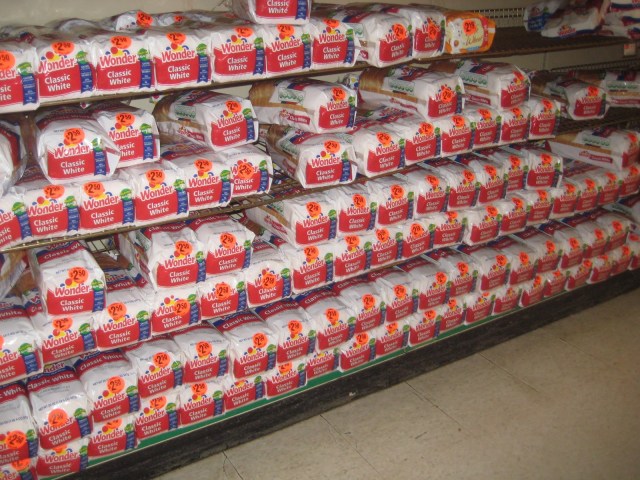
This is what the choices for family dramedies usually look like.
Mari: Yes, I think that’s huge. So much of the media portrayal of queer culture in general is about the upper-middle class white section of the community, like The L Word, Queer As Folk, Will and Grace, etc etc. It really gives the impression than being queer and/or trans is something only privileged white people get to be. I think that’s especially harmful considering the exponentially higher challenges faced by queer people of color and trans people of color.
As corollary to that, I kinda feel like this is a story that’s been covered, the story of a later-in-life transitioning woman who’s married with children. This is pretty close in a lot of ways to Transparent (the documentary) from 2005, books like Jenny Boylan’s memoirs, Helen Boyd’s She’s Not The Man I Married, and Kristen Beck’s Warrior Princess.
Mey: Yes! I’ve talked to Janet Mock about that, how later-in-life white trans women with families completely dominated the trans memoir and story landscape for a long time, and only now are we starting to see diversity in the stories we hear, so Transparent does seem like a step back in that way.
Mari: *nod* Even Sophia in OINTB plays into that to a certain degree. The saving grace there is that she’s not white, but it’s still post-marriage, post-children transitioning.
Can I comment on two inter-related gripes I have?
Mey: Yeah, definitely.
Mari: To start, do we NEED another transition story? Why is that the only thing we can ever talk about when it comes to trans people? There’s a cis fascination with the “transformation” aspect of our transitions, so all discussions, all news coverage, all fictional narratives about us written by cis people have to somehow cover our transitions and contain the “before and after” photos, or the need to use dead names. Why can’t we have a trans character who has completed transition, and that’s all we ever know them as? Why does a period of our lives that’s quite short in comparison to the the period of time we’re post-transition have to dominate all narratives about us?
Intersected with that, why does the focus need to be on how this character’s transition affects everyone around her? It’s not about her and her journey and struggles. It’s about her family’s struggles WITH her and how something very important that’s she’s clearly struggled with for decades affects THEM and their lives. Again, that problem is pretty consistent in other accounts that discuss transition. And when this happens, the trans character become a plot device instead of a person.
Any other negatives before we talk about some of the positives? I’ll let you go first on this one.
Mey: Well, as far as positives go, as much as I think it looks problematic and overdone and White and everything, it does look pretty good. Like, they know how to market the show to Queer Millenials. And so I like that they’re putting some effort into making a quality piece of TV (or internet TV) about a trans person (and some other queer women). Plus, this does look better than a lot of trans media. So I guess my first thing that I think looks positive about it is that it’s quality.
Mari: *nod* That’s what first struck me, too. The writing is clearly pretty decent, which I’d expect from a project helmed by Soloway. The trailer gives an indication that the cast performances, including Jeffrey Tambor (problematic as it may be) will be worth watching at least an episode or two. I also like that other queer story lines are included, including one daughter who is clearly not straight, and another who is (from some interviews with Soloway) struggling with her own gender identity.
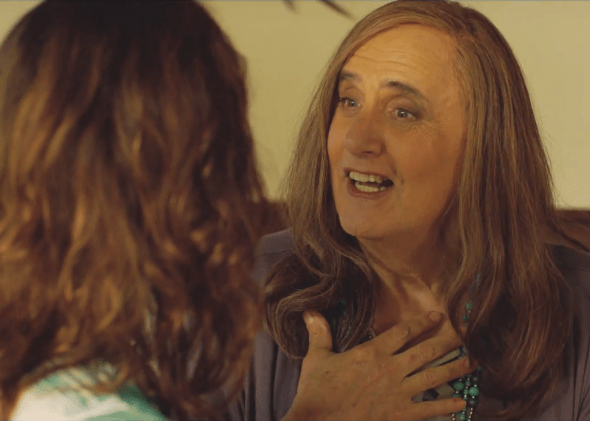
Jeffrey Tambor as Maura
Mey: Yeah, definitely. And can we talk about that last line of the preview? The one where Maura’s (Jeffrey Tambor’s character) daughter asks her if she’s going to be “dressing up like a lady all the time” and she laughs a little and says, “No, honey, all my life, my whole life, I’ve been dressing up like a man.” That really killed me. I went into the preview ready to roll my eyes, but when she said that line, I was literally crying. That’s maybe my favorite line of dialogue about being trans I’ve heard written by cis people.
Mari: OMG YES THAT LINE. That line was like a stab in the chest. I’m pretty sure I’ve said something similar, either in conversation or writing. It was the moment that gave me hope that SOMEONE involved in the writing of the show actually “gets it.” Especially after some of the earlier comments from other characters about it being a “kink” and such.
There WERE, thankfully, some trans consultants on the show, and one of the writers is genderqueer. I know that Jenny Boylan consulted on the character creation at one point. I think, even more importantly, some of the more… problematic consults who worked on pieces like Dallas Buyer’s Club weren’t involved.
Mey: Oh yeah, that “it’s his little private kink” line! I did roll my eyes at that. But also Kathryn Hahn is in that scene, and I love her, so that’s another cast member I like.
That’s good about the consultants, I hoped they had done that, but didn’t know for sure. I hadn’t heard that about one of the writers, but that’s also a good sign. And yeah, that does make me feel better about which consultants weren’t used.
Mari: Another fact about the productions that made me feel a little better was the fact that Soloway put very specific efforts into making the set and crew very trans inclusive. According to her interview in the New York Times, they had 20 trans cast and crew and at least 60 trans extras.
Mey: Oh wow, that is good. So how about we wrap this up?
Mari: Sure. Final thoughts. You want to go first?
Mey: Sure. So, like we’ve said, this does look like it treads a lot of way-too-familiar ground. I’d much rather see fresh stories about trans women who aren’t necessarily well-off, white and with already established families. I’d also like to see stories about trans women where it isn’t just about how their transition effects their family and friends. And I definitely wish that the main character was played by a trans woman. But, I do think that they are trying to do a fairly good job. I’d even like to think that if the casting decisions were made a year later, they might have cast a trans woman as the lead. And the writing definitely looks good. I’m planning on watching it and giving it maybe two or three chances to mess up before deciding if I quit or not.
Mari: I think the series has problems, and they’re the same problems we tend to see time and time again. I’m concerned that the series might end up being a little on the exploitative side. I’m not pleased that the main character is played by a cis man, and I think the series treads some pretty well-worn paths without breaking a ton of ground. But, I have a least a little hope that it might tread those paths BETTER than those that have come before. The writing and acting look promising, and Jill Soloway is fairly brilliant, so those things should help to elevate it to at least “watchable.” I’ll definitely be watching the first few episodes with a smudge of optimism that something good will come of this project.
Transparent premieres on Amazon Prime on September 26.
Six Reasons to Stop What You’re Doing and Watch “Lyle”
Listen. LISTEN. There is a new horror movie out right this very minute called Lyle that takes its cue from Rosemary’s Baby, and you must see it as soon as humanly possible. Should you not be one to follow simple orders without detailed explanation, I offer you six reasons to do so below.
Before delving into my six reasons, though, I should tell you that you can watch this brilliant, female-directed, female-driven horror film for FREE just by going to lylemovie.com. The film has been released free of charge in conjunction with a Kickstarter campaign that will fuel the creation of two more female-driven horror films by the same writer/director (Stewart Thorndike, who you’ll meet in my very first point). The next film, which will be funded by the Kickstarter, is called Putney — it centers around a haunted Ted Talk.
YOU HEARD ME RIGHT. A HAUNTED TED TALK. GET OUT OF MY FACE.
Anyhow… here are six reasons why you should stop whatever you’re doing and watch Lyle:
1. Stewart F*cking Thorndike
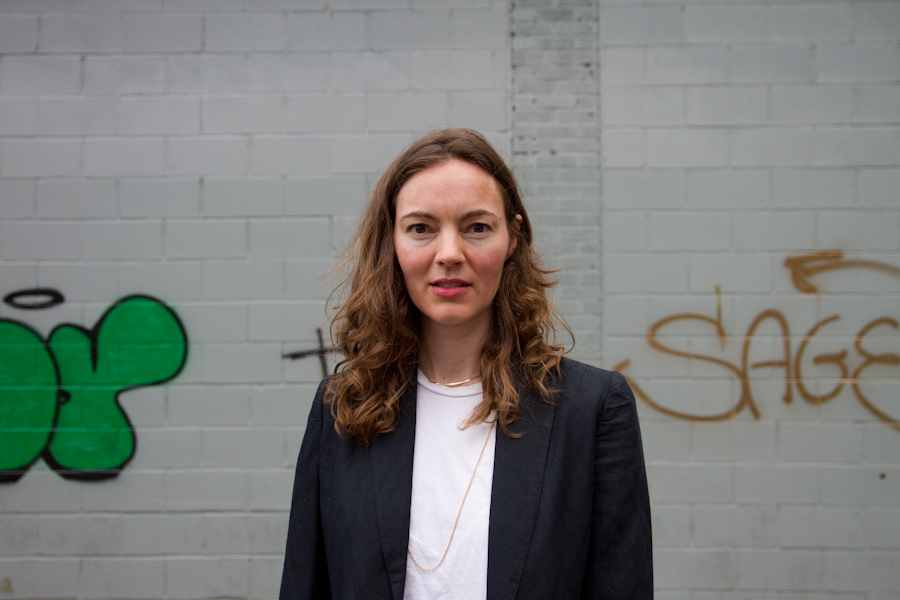
Hi, I’m a badass
Stewart Thorndike, whose middle name isn’t officially ‘Fucking,’ is the female writer and director of Lyle. Now, we all know that there could stand to be more women in most areas of business, and the world of movies is certainly one of them. With a staggering number of movies consistently failing the Bechdel test each year, it is still unfortunately an exciting and important thing to have films where female characters are not only given names, but who also speak to each other about something other than a man! What’s more, the genre of horror is an exceptionally male-dominated space, and Thorndike’s mission doesn’t end with Lyle — in fact, this powerfully-written and directed film is her first in a planned trifecta of female-driven horror movies. Next up is a horror film called Putney, which centers around a haunted TED Talk. I think I told you earlier in relation to this point: get out of my face (and go help fund this thing).
2. Cin.e.ma.tography.
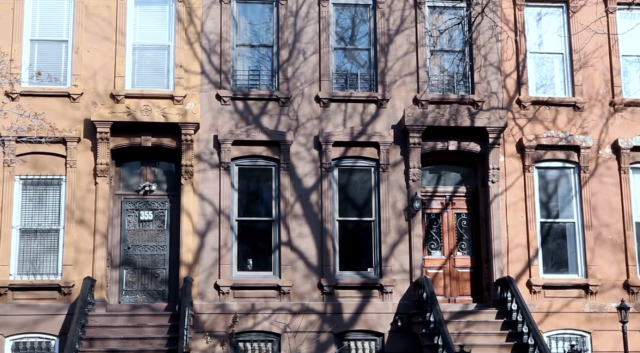
This is stunning… but get me tf out of here.
Ughhhhh, every goddamn shot in this goddamn movie is goddamn gorgeous. Confession: I am not an expert on cinematography; I cannot name famous filmmakers and styles of shooting for your reference. However, I love beautiful, hand-crafted things, and I have, despite my lack of film school, noticed how so many of the movies we see today are not interested in exploring the power of color, lighting, and visual aesthetic. Lyle is the antithesis of this sort of cinema-laziness, with each moment punching your eyeballs in with the sheer force of its beauty. There was a particular scene in the film, where Gaby Hoffman is slowly, simply, unpacking a box, while Lyle plays in the background. I turned to my wife while watching, paused the movie, asked her how such a simple thing could be so breathtakingly beautiful — two human beings in a nearly-empty apartment, and I felt as though any still from the scene (and every other in the film) could have been hanging in a museum.
3. Gaby F*cking Hoffman
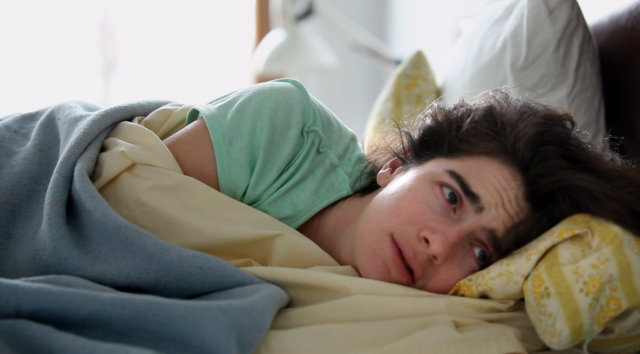
Marry me
WELL, SHIT. You guys undoubtedly remember Gaby Hoffman from our collective shared childhood experience watching movies like Field of Dreams and Uncle Buck and Now and Then (!!!), annnnd you may also know her from this really indie, underground show called Girls. She also just finished shooting on Amazon’s upcoming series, Transparent.
In Lyle, Hoffman seems to channel every badass bone in her body to deliver a stunning, tragic performance as Lyle’s mother, Leah. What’s more, she chose the project despite the fact that the film’s budget only had room to pay her $100 for each day of shooting. In an interview with The Guardian, Hoffman explains, “What I prefer is good writing and smart people — wherever that is found, and that is found all over the place in terms of budget — that’s where I tend to want to be.”
4. Impactful Brevity
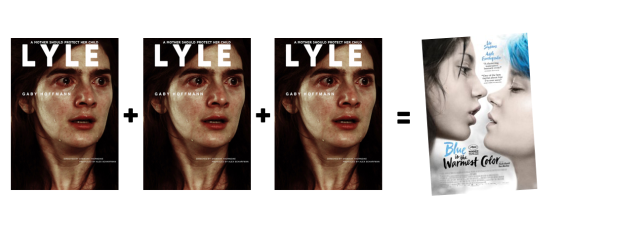
Lol
At a running-time of 65 minutes, you can fit three Lyles into one Blue is the Warmest Color. To that I say: Alleluia. Lyle was originally conceptualized as a horror webseries, but writer/director Thorndike realized during filming that she preferred it as one, fluid piece. What we get as the audience is a story told exactly as its creator intended, with a powerful complexity that lasts far past the initial hour of viewing. The musical score follows suit, delivering a bone-chilling backdrop of stark piano notes. Incredible how 65 minutes and a few piano chords can make you hide under your own bed at age 33…
5. Ghosts Don’t Discriminate
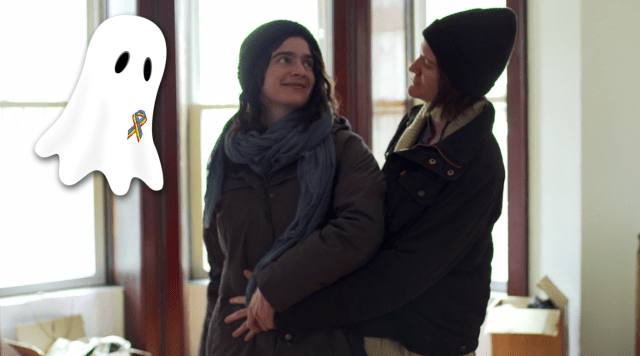
You know what rules? What rules is when a movie has queer characters (Leah is married to June, played by F to 7th’s Ingrid Jungermann) who, instead of dealing primarily or exclusively with being-gay-gay-stuff, have to face everyday-life struggles such as terror, possession, and hauntings. Thorndike told Tribeca Films, “When I first thought of the idea for Lyle, I thought it would be interesting to make a genre film with a lesbian couple, where the story wasn’t about how hard it is to be gay. I really wanted that.” Lucky for her, since ghosts have been equal opportunity haunters since the dawn of time. Bra-fucking-vo.
6. Because We Will Watch It
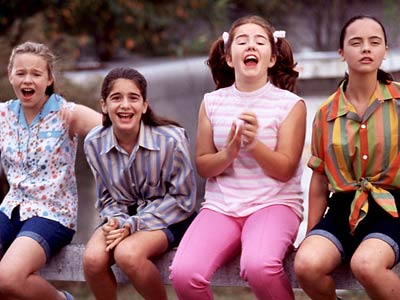
Yes, We Can
Thorndike has been repeatedly told by bigger-budget film-humans that there simply isn’t an audience for female-driven horror films. Say what?! Oh, sure… women don’t want to see themselves in horror films just like they all love to cook pot roasts while wearing sexy lingerie. When I asked Thorndike how she knew there was an audience, she replied, simply, “I know there’s an audience for people wanting female driven genre films because I want them.” You and me both, Stewart. YOU AND ME BOTH.
So, there you have them. My six points.
Not only do I personally want more films like Lyle, but I think we’d be better served with more humans like Thorndike sitting in the writer/director seat. So, go watch the movie. Love the movie. Hide under your bed. Et cetera.
Then, do what people do these days when they love something (which you inevitably will):
Share the movie, share the Kickstarter campaign, and support Thorndike’s future work by donating. Let’s all enjoy Lyle and support Putney, yes… but more so, let’s show the universe that, undoubtedly, there is an audience for female-driven horror. Even if we are watching the film while cooking a pot roast in our sexy lingerie.
PS: There are six points on this list. Each title has six syllables. Each point has six explanatory sentences. You are welcome, you’ve been tricked, you are probably now possessed. If I knew how to make the sixes drip blood using HTML code, I would.
PPS: Despite always knowing that my mother’s name is Rosemary, it was only upon writing this piece that I realized that makes me Rosemary’s Baby.
*creepy piano music, fade to black*
“Transparent” TV Pilot Features Trans Mom, Queer Women, Additional Delightful Things
*This posts contains super minimal, like really tiny, baby quarter-spoilers.*
Last week Amazon released a second wave of streaming TV pilots to compete for a spot as the next Amazon original series. Amidst the offerings was Transparent, a family comedy Amazon describes as “An LA family with serious boundary issues have their past and future unravel when a dramatic admission causes everyone’s secrets to spill out.” I think you’re going to like the secret: it’s LBT women. The show opens by introducing you to three adult siblings: Josh (Jay Duplass), a sad-eyed hippie manchild; Ali (Gaby Hoffman), a wry, failure-to-launch depressive; and Sarah (Amy Landecker), a pampered, type A housewife, clearly bored by the monotony of her marriage. The human they know as their father “Mort” — now Maura — invites them over for dinner at their childhood home in order to come out to them as transgender. Unfortunately, the children are so busy selfishly bickering over who should get the house if their parent dies of cancer that Maura’s news never makes it out.
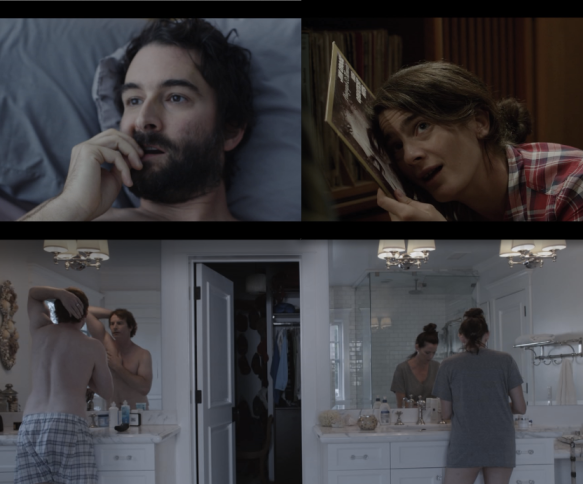
Josh picks his teeth. Ali tries to find meaning in a Jim Croce album. Sarah and her husband primp.
If you think Maura’s children sound self-absorbed and not very likeable, you’re exactly right! The characters in Transparent aren’t aspirational archetypes — they’re quirky, naval gazing weirdos — but they’re well written! After just thirty minutes you already know intrinsically who these people are and what they’re about: in real life, they’d be the annoying acquaintances just beyond your inner circle whose antics you love to hate. Like Lena Dunham meets Wes Anderson — simultaneously off-putting and enthralling. Plus, ten minutes in, we learn that another lead character, Sarah, had a serious relationship in college with a lesbian who resurfaces in the pilot wearing very cute glasses. Against the backdrop of her family, Maura is the most down-to-earth and sympathetic character. Given the overwhelmingly negative portrayal of trans people on TV, any positive representation is a welcome addition. However, the casting choice for Maura (Jeffrey Tambor, best known for his comedic role in Arrested Development) did send up a red flag.
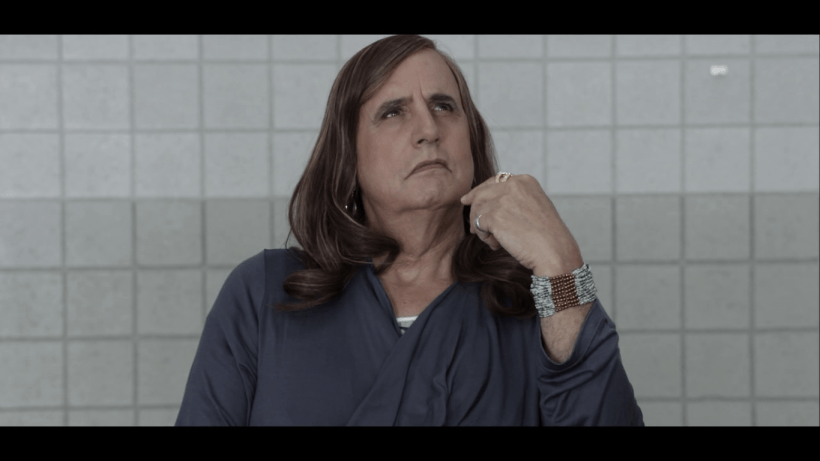
Jeffrey Tambor as Maura.
This pilot comes at an interesting time. Last year’s highest profile trans-inclusive film, Dallas Buyer’s Club, has been winning mainstream awards left and right while simultaneously drawing sharp criticism from queer community members. For one thing, many feel that the casting of a cis man in a trans woman role reinforces dangerous stereotypes of trans people being drag queens. For another, Jared Leto continually fails to be an advocate for trans women and is actually using the platform to be a total ass. I can’t imagine we’d be hearing such tone-deaf remarks from someone with lived experience as a trans person. That a cis man was again cast in a trans woman’s role gives me serious pause, especially when that actor is best known to me as George Bluth, walking punchline. That being said, the decision seems to have been made thoughtfully, with trans actors in supporting roles on screen and numerous trans people involved in production.
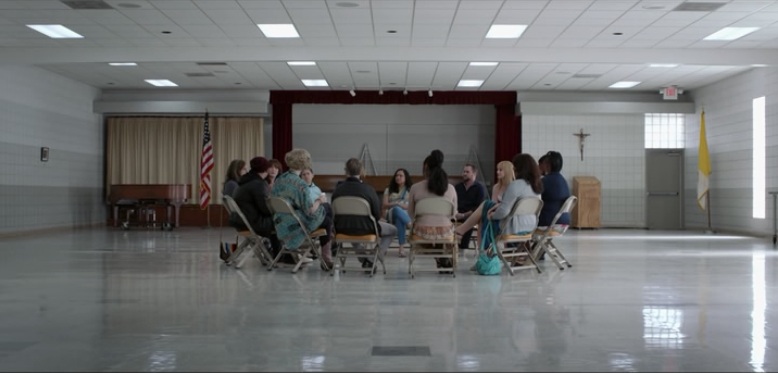
Maura’s trans support group. Aside from Tambor, all the actors in the scene were trans.
Director Rhys Ernst, a trans man, explained:
As a trans director, I ask myself, how would I cast a non-medically transitioning trans person, or someone pre-transition? I look at all options, and that may include some cisgender actors. I also see filmmaking as a holistic practice and don’t see casting as the only area to focus on regarding the politics of trans representation. Filmmaking is a team effort and when it comes to trans related subject matter, trans sensitivity needs to be integrated throughout the entire production chain.
He went on,
As a filmmaker I have gone to great lengths to cast transgender actors. It sometimes takes more work to locate trans actors but because of my commitment to trans representation, I feel it’s a step well worth taking…there are certain instances in which casting a cisgender actor in a trans role can be appropriate. I don’t think it’s nearly as often as Hollywood’s track record might suggest, and 9 out of 10 trans characters in Hollywood productions are typically a disappointment, both in their writing and in their casting.
Whatever the verdict on the casting, writer Jill Soloway‘s work shines here. Soloway has written and produced for Six Feet Under, United States of Tara and Grey’s Anatomy in the past, as well as a few episodes of Dirty Sexy Money, the first primetime show to feature a trans character played by a trans actor (Candis Cayne). Soloway described Transparent as her “dream project” post-Six Feet Under, “this idea about a family who inherited a secret about sexuality as opposed to a funeral home.” So far, it seems that Maura is also a lady-loving lady, and aforementioned daughter Sarah might be lined up for her own coming out narrative. (Or something. It’s complicated. But she’s definitely queer.)
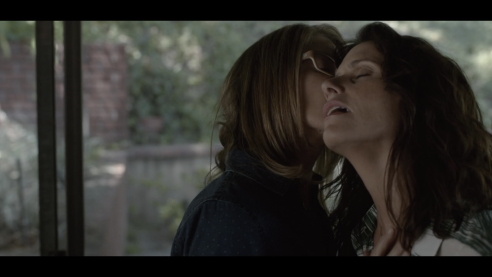
Tammy is described as a lesbian. Sarah isn’t labeled but her relationships suggest she may be bisexual.
The pilot for Transparent is available streaming free on Amazon. To provide feedback and help this show be picked for further production, complete the survey at AmazonOriginals.com.
Things I Read That I Love #83: Sometimes I Think, This Is Really Chloë-ish
 HELLO and welcome to the 83rd installment of Things I Read That I Love, wherein I share with you some of the longer-form journalism/essays I’ve read recently so that you can read them too and we can all know more about Chloë Sevigny! This “column” is less feminist/queer focused than the rest of the site because when something is feminist/queer focused, I put it on the rest of the site. Here is where the other things are.
HELLO and welcome to the 83rd installment of Things I Read That I Love, wherein I share with you some of the longer-form journalism/essays I’ve read recently so that you can read them too and we can all know more about Chloë Sevigny! This “column” is less feminist/queer focused than the rest of the site because when something is feminist/queer focused, I put it on the rest of the site. Here is where the other things are.
The title of this feature is inspired by the title of Emily Gould’s tumblr, Things I Ate That I Love.
Chloë’s Scene (November 1994), by Jay McInerny for The New Yorker – What’s so great about this article is how it really transports you to the 90’s in a major way. This is about Chloë Sevigny before Kids had even premiered and she was just this street fashion icon and club-goer and it girl.
Gaby Hoffman: The Chelsea Hotel Had Its Own Eloise (July 2013), by Taffy Brodesser-Akner for The New York Times – I loved this girl so much growing up, and all of her movies. She was my heroine and I wanted to be just like her.
In Sickness and In Health (June 2013), by Liz Prato for The Rumpus – “When I collapsed after my whole family died, I did feel like a failure. I could not pull myself up by the bootstraps. I could not just put one foot in front of the other. I could not summon some inner strength to go on. I just wanted it—the pain—to be over. I am only alive because my husband kept me tethered to this earth, because when I pleaded with him, “Please let me die. You’re the only reason I don’t do it, so please let me go,” he would not.”
Bill Cosby Schools Us About Those Crazy Sweaters, by Hunter Oatman-Stanford for Collecters Weekly – This is an intriguing and magical history of Cosby sweaters.
In The Crosshairs (June 2013), by Nicholas Schmidle for The New Yorker – Long and intense story of decorated sniper Chris Kyle and troubled veteran Eddie Routh and PTSD and post-combat health care and tragedy and drinking and doctors and Iraq and death.
Inside “The Chive” (July 2013), by Jordan Larson for The Awl – I was obvs super-fascinated by this –> “the Chive is largely white, middle-class, heterosexual, pro-America and male. Chivers and Chivettes compose one of the most normative groups in America, and yet constantly describe feeling like outsiders, misfits, and people who “just don’t care,” as one Chiver told me. It’s an expression reminiscent of Fight Club, the desire for an all-inclusive largely male group that rejects the values of larger society—in this case, maybe, maturity and political correctness.
Toppling a Delicate World (June 2013), by Mansi Choski for Vice – This is about gay and lesbian people in India who enter into opposite-sex marriages with other gays and lesbians to please their families, but it’s also about how — SURPRISE!! — all the homophobic aspects of that culture were started by the British colonist douchebags!!
Some Dreamers of the Golden Dream (April 1966), by Joan Didion for The Saturday Evening Post – UGH I LOVE JOAN DIDION. I mean this is a crime story, basically, but she makes it into something so much bigger and more beautiful, about California and San Bernardino County (where A-Camp happens!). Like – “It was in the breakup that the affair ceased to be in the conventional mode and began to resemble instead the novels of James M. Cain, the movies of the late 30s, all the dreams in which violence and threats and blackmail are made to seem commonplaces of middle-class life.”
Los Infiltradores (June 2013), by Michael May for The American Prospect – “How three young undocumented activists risked everything to expose the injustices of immigrant detention—and invented a new form of protest.”
F To 7th Is For the Homoneurotic in All of Us
Vanessa’s Team Pick:
I’m the type of person who falls in love with a sweater and then wears that same (hot pink floral print v-neck) sweater every day for two weeks. I’m the kinda gal who loved My Girl so much as a child I insisted my mom rent it for me every single Saturday night, and eventually our local Blockbuster just gave it to us because we “could’ve bought it 10 times over.” (Sorry, Mom!) I eat greek yogurt every single day for breakfast, I’m all about monogamy and I’ve been sleeping with the same teddy bear since I was 8. What I mean to say is, when I like something, I commit. When I fall in love, I fall hard. And when I find these perfect little gems in the every day treasure chest of life, I want to share that feeling of happiness and adoration with the world.
Which is why I have to talk to you about F To 7th again. Have you been watching this “homoneurotic” web series about Ingrid Jungermann and her “descent into lesbian middle age?” You really have to. Seriously, it’s written by Jungerman, the woman who brought us The Slope, the episodes are super funny in that oh god this is so awkward but I can’t look away kinda way, the cast is filled with attractive famous humans like Amy Sedaris and Ann Carr and each episode is approximately 5 minutes so you can watch it before bed without feeling guilty that you’re fucking up your sleep schedule.
The point is this show is very very good, and you should be watching. My favorite episode so far is “Straight Talk,” probably because Gaby Hoffman’s straight young mom character reminds me a bit of myself before I realized I was gay and a bit of myself as I imagine I’ll be once I have a child and while that’s probably not something to be proud of it did make me laugh a lot. Episodes 1-6 are available to watch online and a new episode is released every Monday. It’s the perfect way to start your week!
You Should Go: F To 7th Free Preview Screening And Launch Party
Hello friends, I am here to tell you another thing about F To 7th, the new lesbian webseries created by Ingrid Jungermann of The Slope. You may remember that I originally asked you to help Kickstart this series, and then last week I showed you an exclusive teaser video that included Amy Sedaris and all our favorite words. Now I’m going to tell you how you can see the webseries before it goes live on your computer screen, for exactly zero dollars! You just need to be in New York and free this Thursday night.

The Independent Filmmaker Project, the nation’s oldest and largest organization of independent filmmakers as well as the premier advocate for them, is hosting a free preview screening and party to celebrate the launch of F To 7th at the ReRun Gastropub Theater in Dumbo, Brooklyn. The event will include performances by cast and crew members including Ann Carr, Charles Rogers and the all-female NY improv troupe, Wicked City. Also I’ll be attending, possibly with Lemon but probably by myself, and I’m going to need somebody to sit with, so you have to come, okay?
If sitting next to me during the screening isn’t incentive enough to go, here’s a refresher about what this funny new webseries is all about.
A spin-off of the web series The Slope, F To 7th follows Ingrid as she struggles to find her place in a world where sexuality and gender have left her old-fashioned lesbianism behind. The eight-episode first season features guest spots by Amy Sedaris (Strangers With Candy), Michael Showalter (Wet Hot American Summer), and Gaby Hoffmann (Louie), each playing very different characters. Showalter plays a competitive dog owner with Isaiah Stokes (Louie) while Sedaris plays Ingrid’s conservative Aunt Kate who is a tad too interested in her sex life.
F To 7th premieres online on Monday, January 21; new episodes will air every Monday.
The free preview screening / launch party is on Thursday, January 17 at 7pm. ReRun Theater is located at 147 Front Street, Brooklyn, New York.
‘F To 7th’ On Kickstarter: ‘The Slope’ Spin-Off Needs Your Help
Last year we discovered The Slope, a comedic web series by Ingrid Jungermann and Desiree Akhaven about “superficial, homophobic lesbians” in Park Slope, Brooklyn, and it was love at first laugh. The pair, who are an IRL couple, captured the blend of shallow behavior and self-righteous indignation that we often profess to see from our neighbors (but never ourselves, naturally) in a decidedly un-PC satirical series.
Well, if you’ve found yourself wistfully thinking that you’d love to see a third season of The Slope, you’re in luck! Because…guess what?! What’s that? No, Jungermann and Akhaven are not producing a third season of The Slope — that would’ve been way too easy to guess, silly! But the reality is just as delicious: Jungermann has ventured out on her own to create a spin-off web series, a new show that will focus on her descent into lesbian middle age, as she struggles to find herself in a world where gender and sexuality have left her “old fashioned lesbianism” behind. The show, which promises to feature “same neighborhood, different gay” is appropriately titled F To 7th, presumably referring to the Park Slope 7th Ave. stop on the F train that will likely never run again thanks to Hurricane Sandy, oops sorry that is just me being sad that I am stranded in Brooklyn forever…ANYWAY!
Like most fantastic projects created by lesbians for lesbians, major Hollywood movie types are weirdly not lining up to throw money at Jungermann to facilitate this series getting made. Which is where you guys come in! F To 7th has a Kickstarter, of course, and they have less than 60 hours left to reach their ambitious goal of $14,000. Nothing I can tell you will be quite as sexy and convincing as watching Jungermann interviewing herself, so let’s let the woman speak for herself.
F to 7th Kickstarter Video: Youngerman on Jungermann from F to 7th Web Series on Vimeo.
If you’re not convinced, I just feel like you should know that Jungermann was named one Filmmaker Magazine’s 25 New Faces of Independent Film for 2012, and the cast is filled with impressive humans like Michael Showalter, Ashlie Atkinson, and Gaby Hoffmann.
Look, let’s get real for a moment: there are a lot of places you can spend your hard earned cash, and honestly after a natural disaster like the one we experienced this week I know many people are focusing on donating to the Red Cross and other volunteer relief efforts. And that’s amazing and important and I support that 100%, but I also think we can always afford to dig in our pockets and give at least $1 to good art. It’s so tough to find lesbian and queer visibility in the media world, and when we have the opportunity to help fund really great, really funny, really ambitious independent projects, I almost feel as though it’s our duty to do so. Otherwise we get stuck with another season of The Real L Word and everybody loses.
Visit F To 7th’s Kickstart TODAY, and if you’ve never seen The Slope and have no idea what this is all about, I strongly recommend you change your plans for the afternoon and fix that immediately. You can thank me later, and hopefully Jungermann can thank us all later when she reaches her fundraising goal. Then we’ll thank her for creating F To 7th, and we can all join the never ending circle of lesbians and queers who help each other out. It’s beautiful, isn’t it?
Top Ten ’90s Movies Beloved by Girls Who Turned Out Gay
The coming out process always involves a little bit of historical re-contextualizing — your emotional attachments to your female best friends or your unexamined aversion to the way men smell in the morning suddenly take on new meaning when looking backwards through brand-new homo-tinted glasses. Your pop-cultural loves are no exception.
Today we look at some of the early-to-mid ’90s films that defined the youths of young queers born in the ’80s. These aren’t gay films, because well, there really weren’t many gay films back then (not like there really are now either though), but films with undertones or secret stories that queers heard loud & clear whether the mainstream knew it or not.
If you like this list, you’ll also like our list of Badass Girl Team movies, which celebrates flicks about girl gangs, girl sports teams, and otherwise group-related girl activities.
Regardless of when you grew up, what were the films that define your queer retrospective? And why do so many of ours star Whoopi Goldberg?
Fried Green Tomatoes (1991)
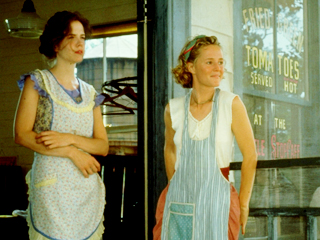
This story is multi-generational, jumping around from the past to present day. We love us some Jessica Tandy and Kathy Bates (her quip about car insurance in this one is classic), but let’s be honest, Mary Louise Parker and Mary Stuart Masterson are the real meat of this movie. Their characters meet when they are super young and obvs fall in love. Idgie is a classic dyke, but Ruth tries out the straight thing for a while. Of course, her marriage fails miserably, and the two women end up reuniting. Collective awwwws all around, especially for Idgie’s adorable over-protectiveness and devotion.
This is one of those “coded” movies that passes as hetero to all of those unenlightened viewers. But to those of us who were looking for a bit more under the surface, the relationship between Ruth and Idgie will give you everything you need. At least, for a fairly PG movie. And of course, if you’ve read the book by Fannie Flagg, it’s abundantly clear that these two women were actually in love. Rumor has it that the actresses wanted to make things a lot more explicit, but Hollywood just wasn’t ready. It also provides a handy straight/gay test: just ask a girl her thoughts on this movie for some extra clues on her orientation!
A League of Their Own (1992)
A League of Their Own is the gayest not-gay movie of all time. Rosie O’Donnell and Madonna play best friends, and the rest of them are farm girls who don’t fit in and just want to play baseball, and also, everybody acts 100% gay the entire time. I mean, COME ON. I know they all go out to a bar and dance with dudes, and yeah Madonna is boy crazy. But remember, this was in the 1940s. What else is a girl to do? Luckily, there’s a reboot coming that promises to tell the GAY story this film always wanted to be.
Little Women (1994)
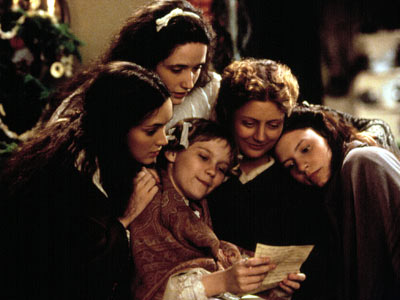
Jo March, played by ’90s heroine Winona Ryder, is The Tomboy Archetype. With an emphasis on the bonds between sisters and the women-without-men wartime household, this film warmed the cockles of many queer hearts.
Girls Town (1996)
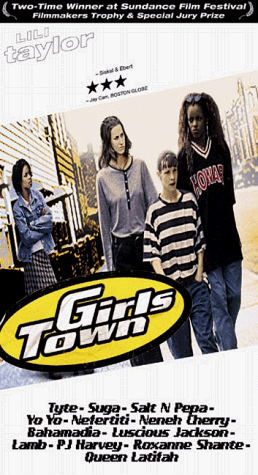
Though largely ignored by mainstream audiences (who can only handle so much girl power), this indie cult film quietly caught on amongst teenage girls and indie film circuits for its stark and female-focused portrayal of urban American life. A tight group of female friends is torn up when their best friend commits suicide, which they later discover was prompted by a rape she never told them about. Basically it’s about how girls bond with other girls to protect themselves from the slings & arrows of the men and the families that neglect them. Also, there is a lot of flannel, sports jerseys, and serious overall action.
The soundtrack gets bonus points for featuring queer faves like PJ Harvey, Salt-n-Pepa & Queen Latifah.
Now and Then (1995)

I remember this movie sold out when we went to see it in the theater, which was devastating, so we all had to buy tickets for some other crap and sneak in, where we sat in the back in the unoccupied wheelchair area in a girl-packed room.
The film centers on four grown women who’ve spent all their life trying to recapture the youthful energy they felt at the age of 12 in the summer of 1970 “when everything started to change,” like right before there was puberty and dating and boys and all those other things, let alone marriage & babies & other hetero trappings. The four girls, played by iconic ’90s girl actresses Christina Ricci, Thora Birch, and Gaby Hoffman, along with Ashleigh Aston Moore (Moore stopped acting in 1997, and tragically died at the age of 26 in 2007 from pneumonia and bronchitis), fought boys who talked shit, played boys’ games and weren’t afraid to get scrappy.
Extra gay points for Rosie O’Donnell as the grown-up Christina Ricci character, Roberta, who was originally supposed to be a lesbian although that storyline was edited out by producers wary of controversy. Demi Moore was dashing in her menswear and her daughter Rumer, who now plays gay on 90210, appeared as Demi’s daughter in Now and Then. ALSO, our dear Haviland Stillwell was an extra/stand-in.
How to Make an American Quilt (1995)
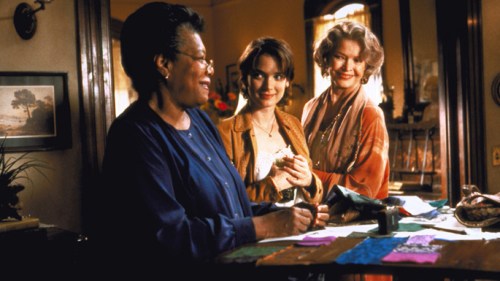
Want the weird girls to see your normal-looking movie? Cast Winona Ryder. While How To Make An American Quilt is essentially about a young woman, Finn (Ryder), who’s about to marry this dude (Dermot Mulroney), it’s also about a how group of women learned to navigate the world while still maintaining a close, if sometimes rocky, friendship with one another. Lesbians love that stuff.
The character of Finn is kind of brooding, confused and agitated. She sulks around in over-sized t-shirts and messy hair. She has feelings. She writes! She’s like us, but straighter. Anne Bancroft is quietly badassy, as per ushe, and Maya Angelou is calming and perfect, probably just like IRL.
Boys on the Side (1995)

Hello, hi! Even the title is kinda gay! Then you’ve got an actual lesbian musician, played by Whoopi Goldberg (ahem), a slightly neurotic woman who ends up screaming CUNT! in the kitchen (Mary-Louise Parker, Fried Green Tomatoes la la laaaa), and crowd favorite, Drew Barrymore, just more or less being herself, I think.
Three women on a road trip, sharing their feelings. Topless Drew Barrymore! Laughter and tears! The Indigo Girls! Nineties lipstick! Southwestern landscapes! There is so much processing and bonding in this movie, it’s almost like it’ll never end (just like a real lesbian relationship!). But it does end, and it’s sad, because you know Jane loved Robin so so much. But Holly’s hair is still super cute, so it’s ok!
The Craft (1996)
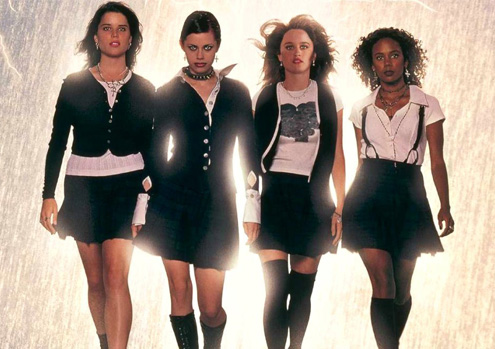
Three high school girls (Fairuza Balk, Neve Campbell and Rachel True) — all social outcasts and slightly bitter — are practicing witchcraft with minimal results. Enter Sarah (Robin Tunney), a semi-depressed new girl with suicidal tendencies and a few secrets. When the gals finds out that Sarah’s a real witch, they invite her to be the all-important fourth member of their coven and shit gets crazy. There are a few epic scenes involving large insects and hair loss, then everyone learns about karma!
This movie had a lot to offer the young queer: cute girls in short black skirts and tight shirts, bonding, friendship and revenge. And of course we all went out and bought a book of spells and some black lipstick, even if we never got around to forming a coven.
Practical Magic (1998)
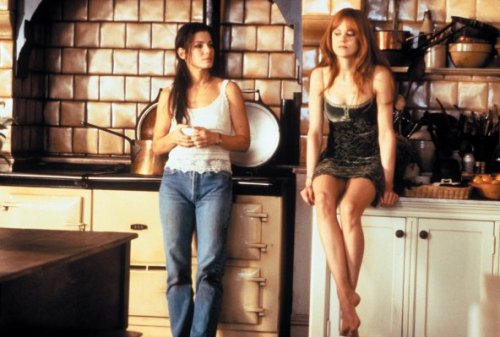
This one centers on a New England family — mainly two sisters, Sally (Sandra Bullock) and Gillian (Nicole Kidman) — rumored to be witches. Their aunts, played by Stockard Channing and Dianne West, and Sally’s two daughters round out the almost entirely female cast. The men in the movie are mostly foils and usually die pretty quickly/repeatedly. Basically, Sally and Gillian go through a bunch of terrible things, along the way learning a lot about each other as sisters and also how to be happy with or without men.
This whole movie is about female empowerment and all the special benefits you get from being a woman. The witchcraft thing just adds another badass layer. The film portrays witchcraft as a special, girls-only club, which is obvs something lesbians can relate to.
Yeah, all of the women in this movie are somehow related, so this isn’t lesbianism at face value. But we like how these ladies are bonded together in extra deep ways, probably because they drink so much tequila together (hello, Midnight Margaritas sounds like the best family tradition ever).
Sister Act (1992) & Sister Act 2 (1993)

Um, hello NUNS IN A CONVENT, my name is Whoopi Goldberg, and I have come to make you SING AND DANCE in unison and revive the spirits of the townspeople who aren’t nearly as gay I MEAN FUN as y’all are! And let’s not forget the sequel, Sister Act 2: Back in the Habit (1993), which featured a young Lauryn Hill as one of the students Whoopi Goldberg has to come whip into shape like she did with the nuns.
Seriously did anyone besides the homos love the sequel, maybe not. We loved the sequel.
Foxfire (1996)
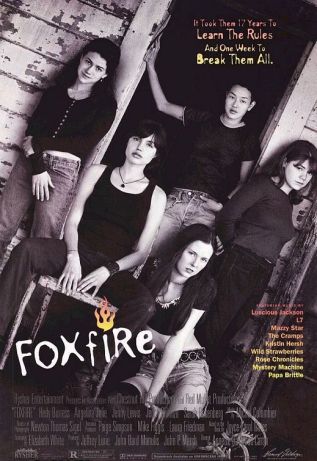
Girl gang taking revenge on the men who have wronged them, as headed up by sexy leather-clad ambisexual ringleader played by Angelina Jolie, with backup by indie heartthrob Jenny Lewis and a lesbian chick played by lesbian model Jenny Shimizu.
This movie was so gay that it even turned Angelina Jolie into a bisexual. It was on the set of Foxfire that Angelina met her first girlfriend, Shimizu.
A’ight ladies, time to kick & scream about your favorites!
